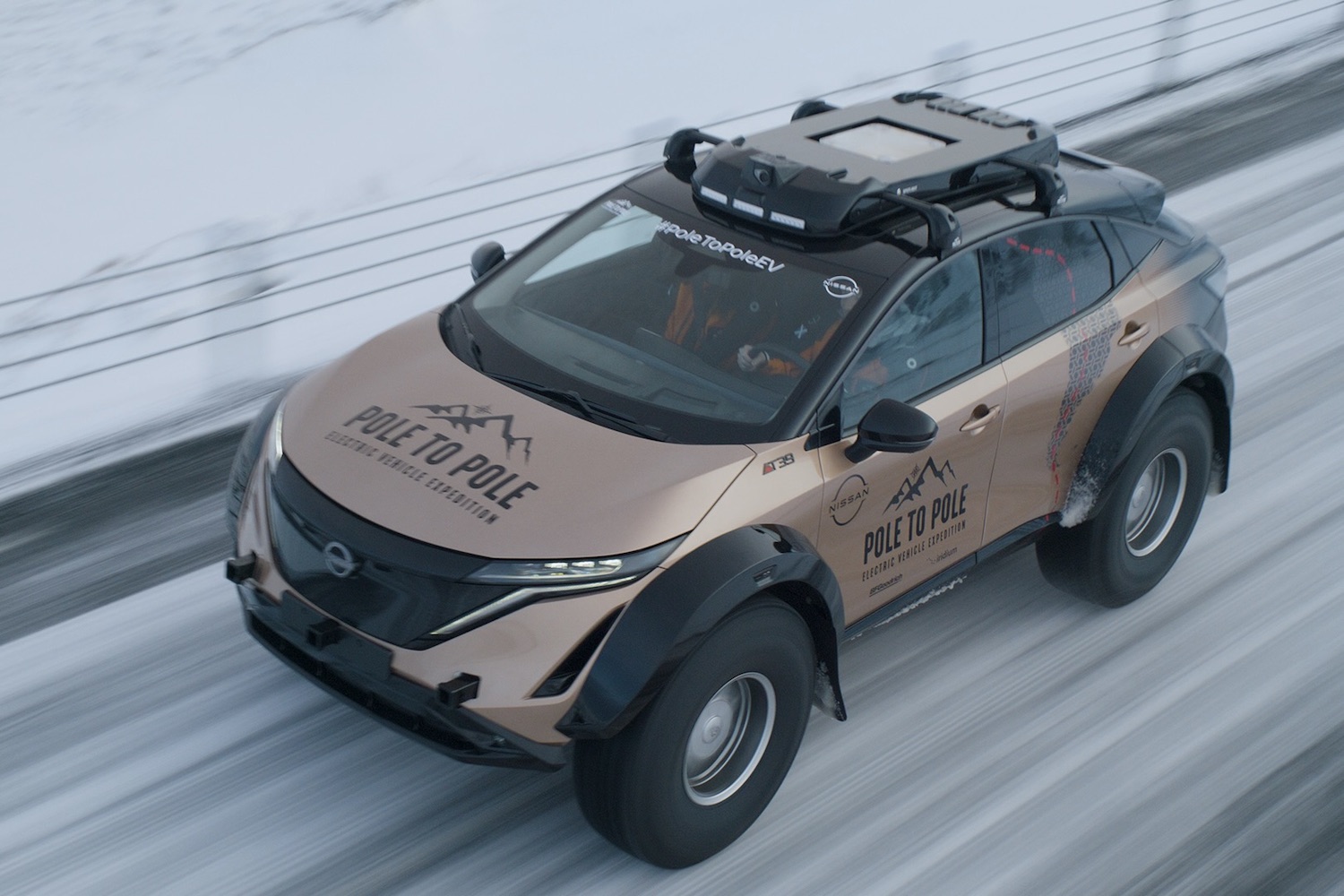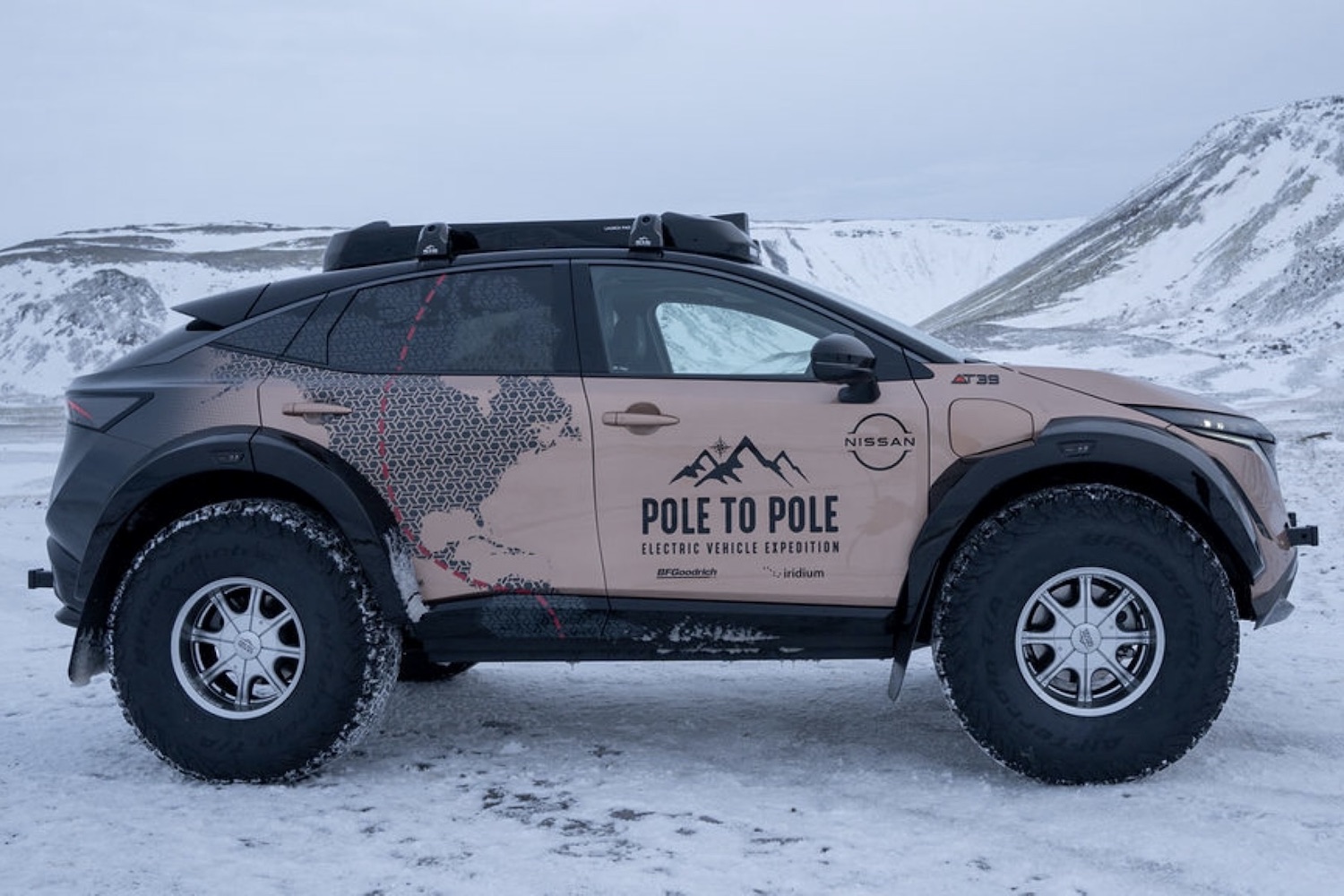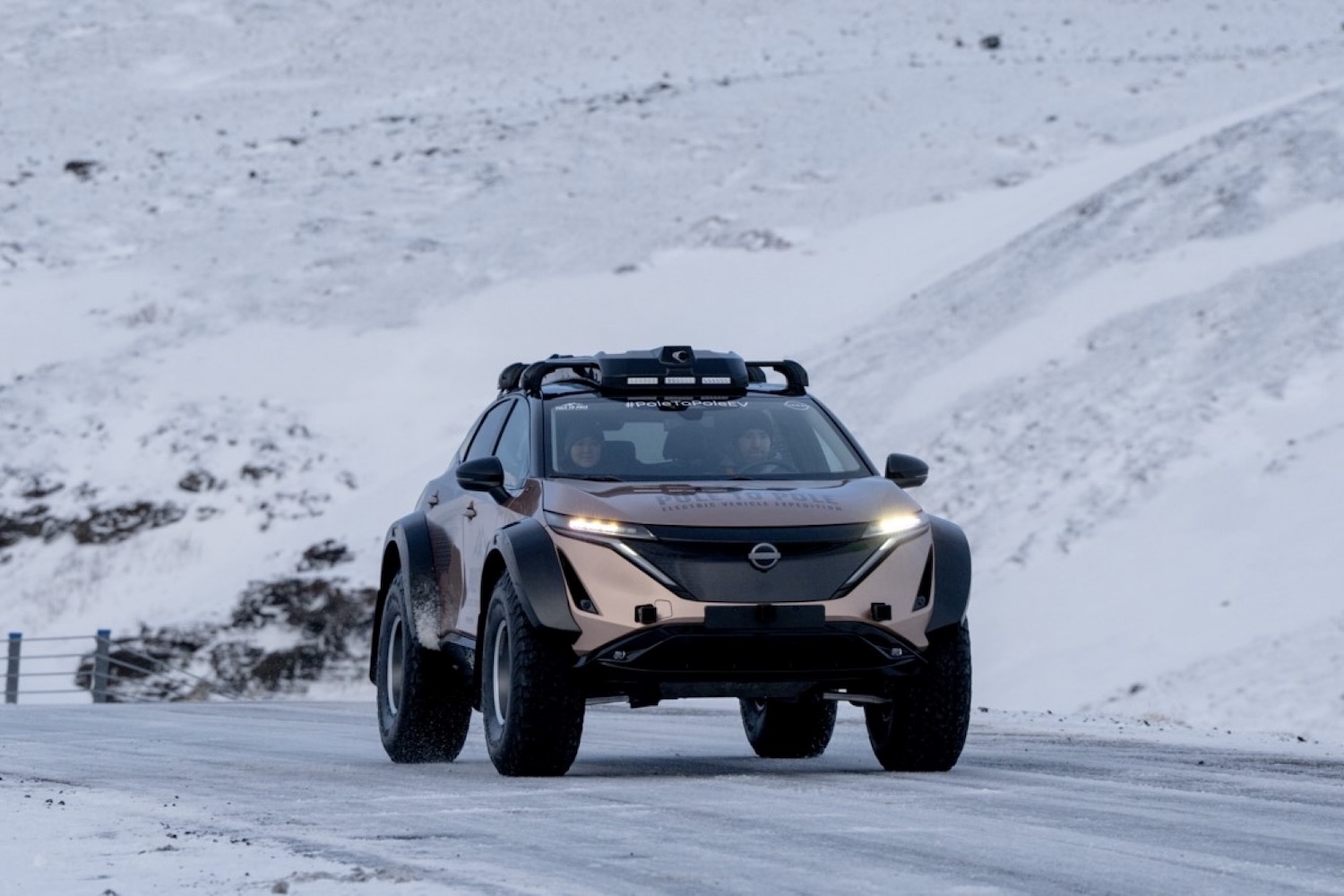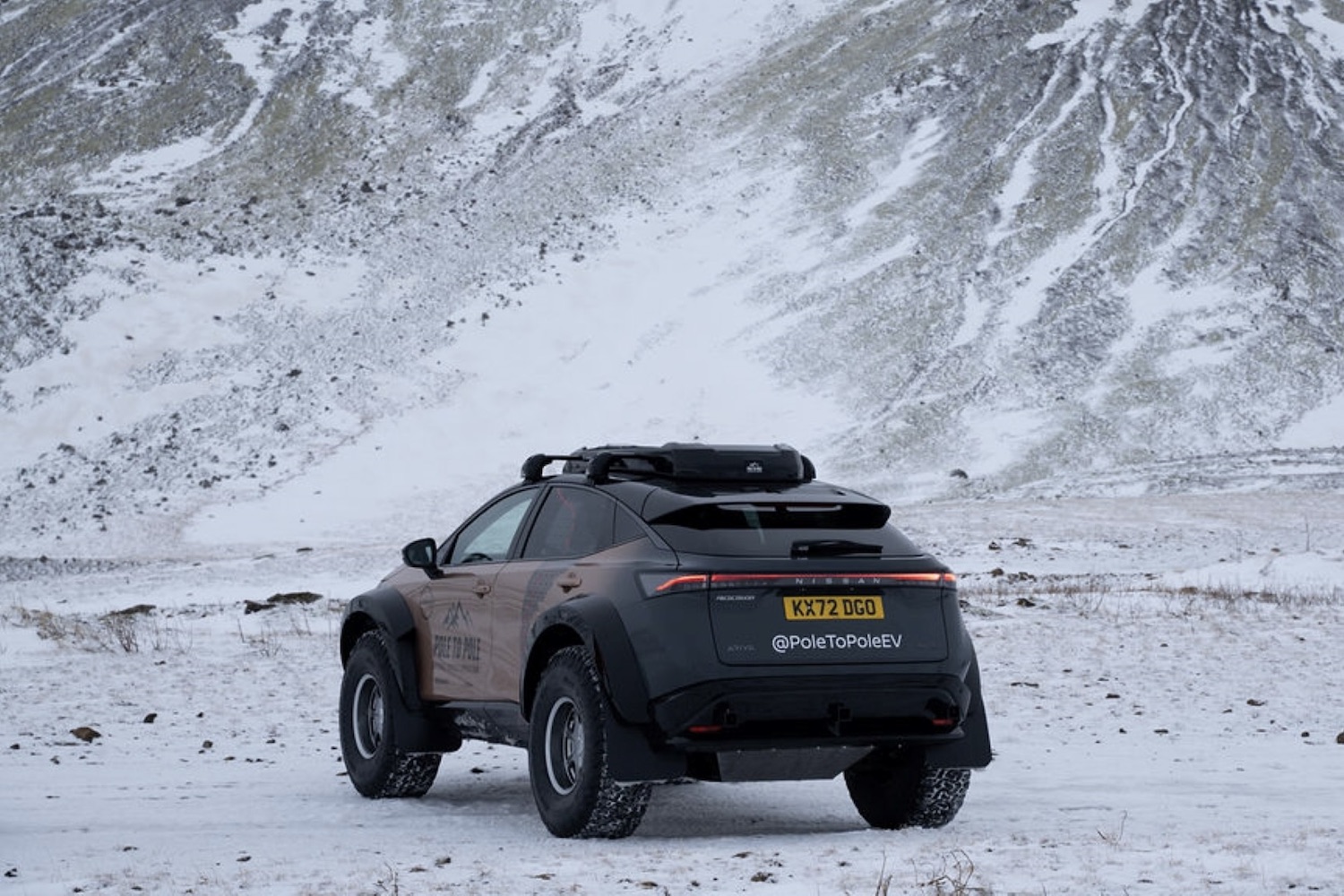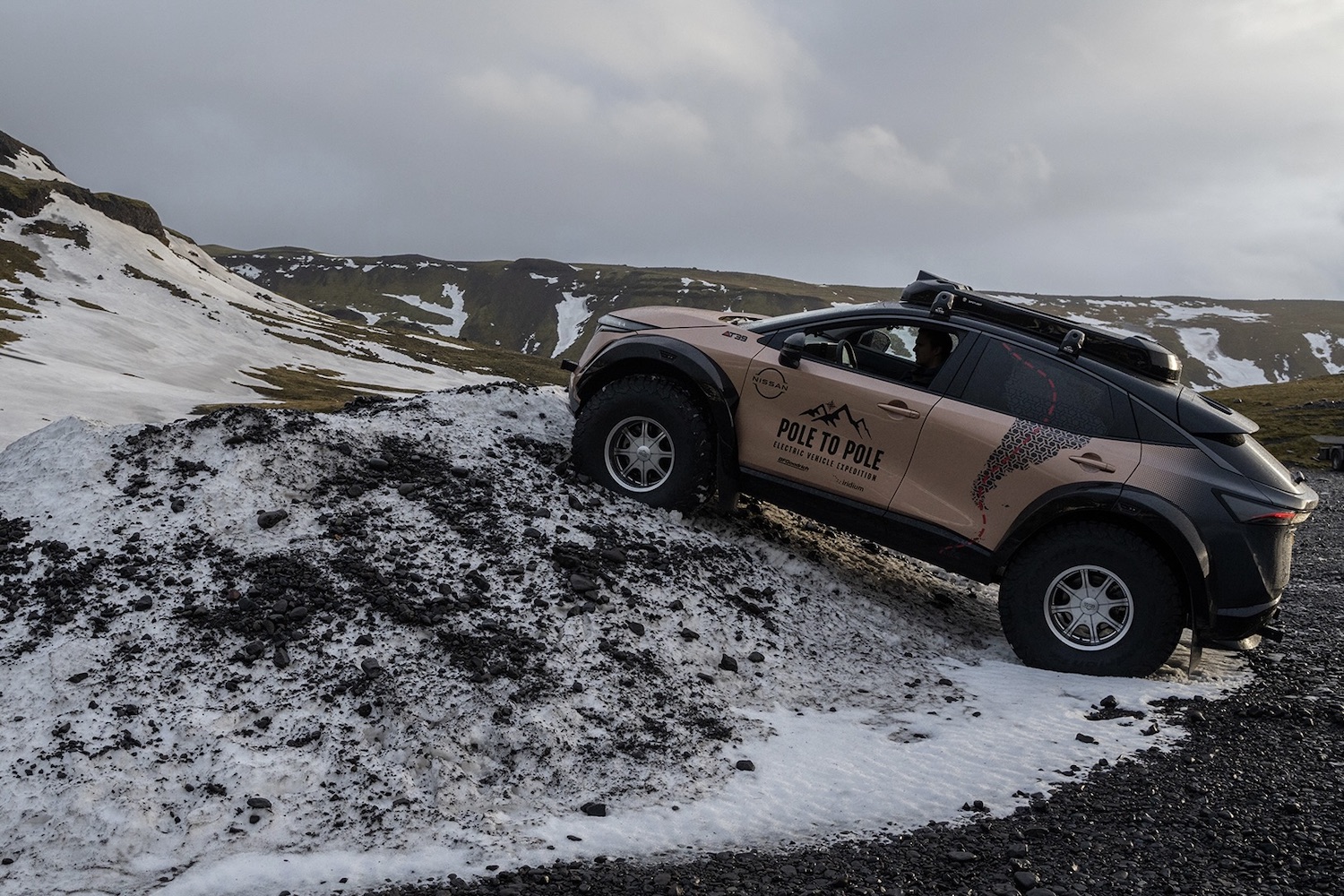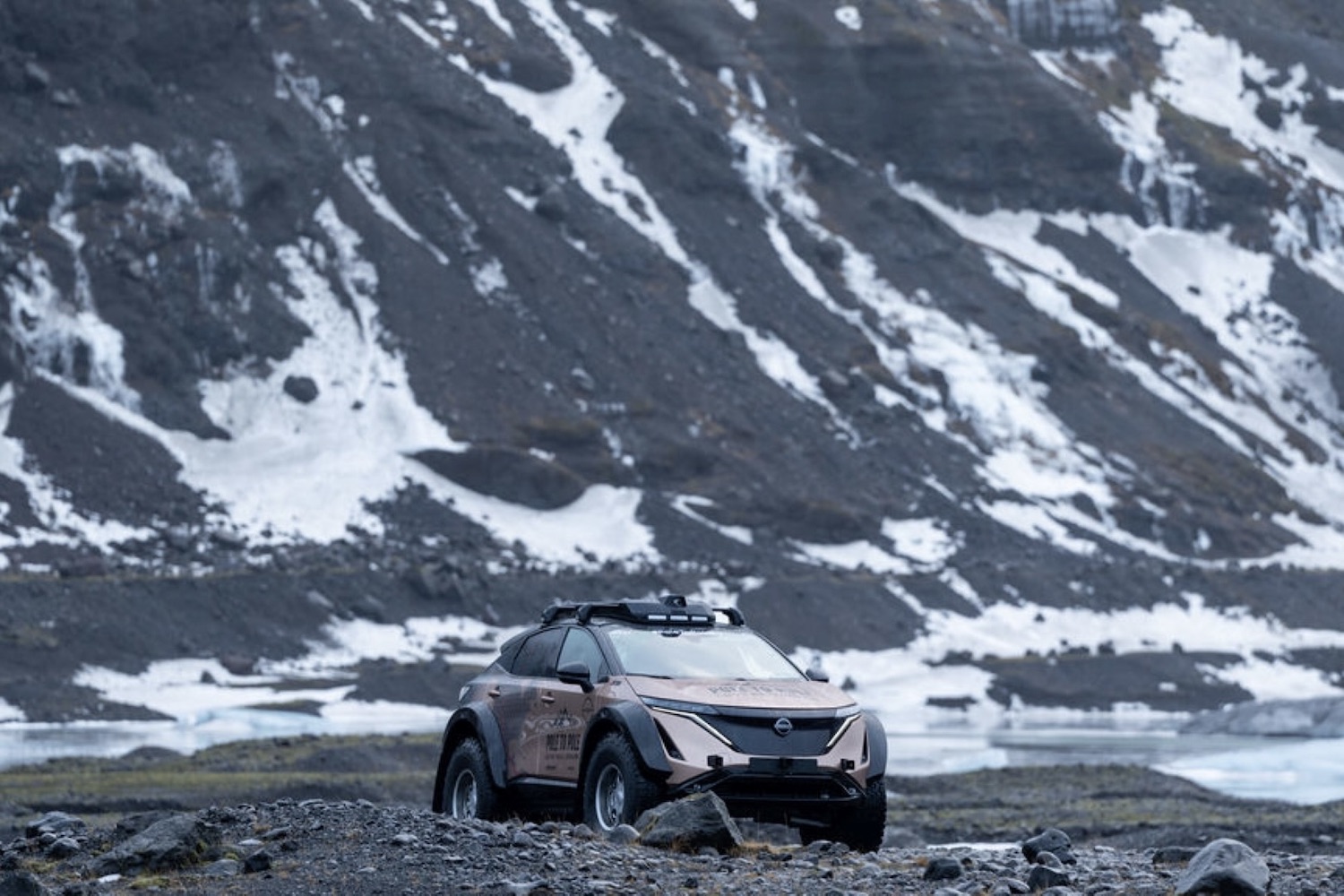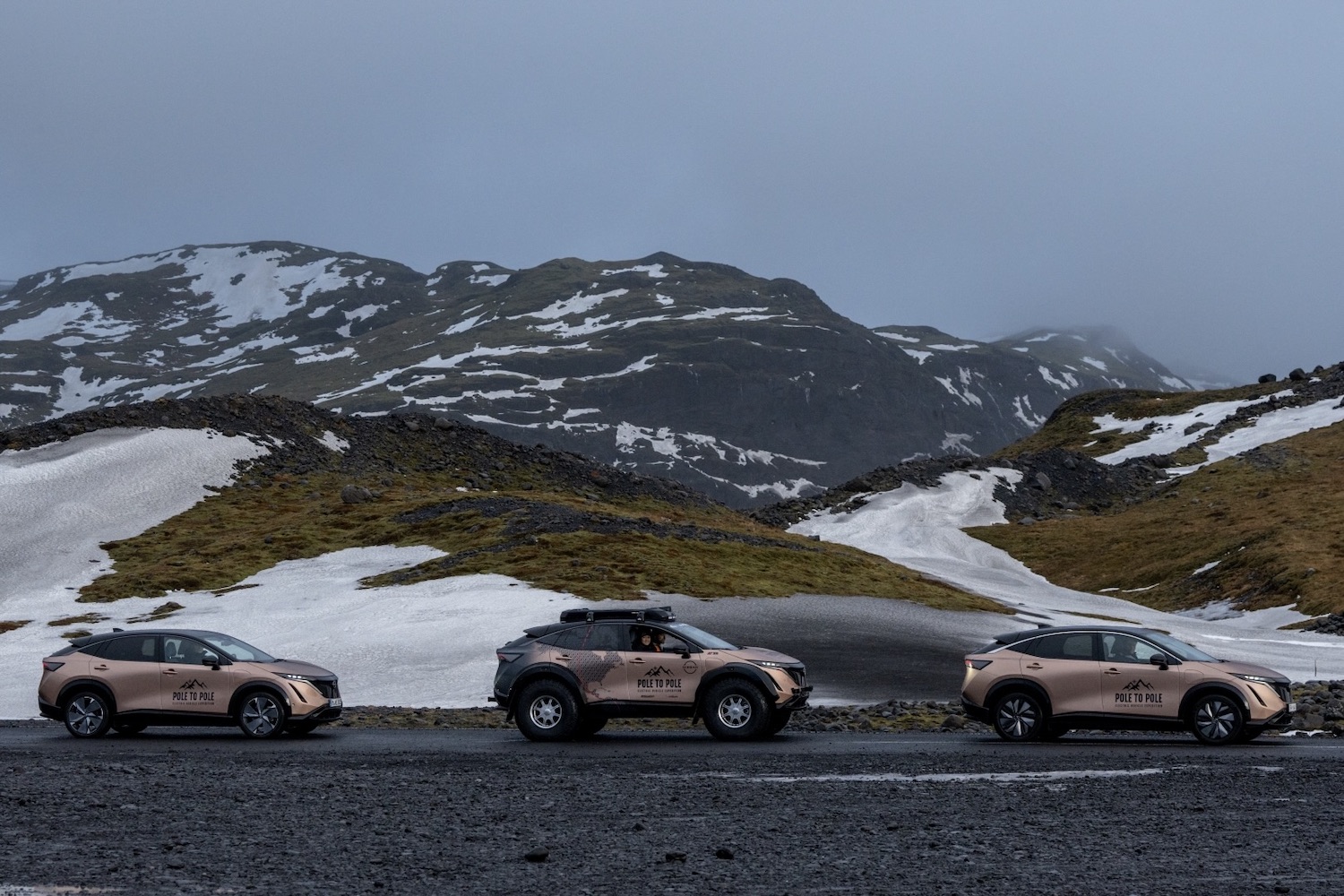If your idea of a road trip is like ours and involves packing up the family vehicle to drive a few hours to the beach, we’re not in the same ballpark as Nissan. The Japanese automaker’s idea of a road trip involves taking a modified all-electric Ariya from the North Pole to the South Pole. That trip, if you’re wondering, spans 17,000 miles. Crazy? You bet, but also in a great way.
To complete the trip, Nissan is partnering with Artic Trucks and the husband-and-wife team of Chris and Julie Ramsey. Artic Trucks, as one would guess from the name, specializes in creating vehicles that are meant to get through inhospitable terrain and are masters of their craft at polar expedition vehicles. Together, Nissan and Artic Trucks have come together to create the Ariya you see here – a roided gym rat compared to the regular electric SUV.
Nissan claims that modifications that were done to the Ariya “have been intentionally minimal,” but we have to assume that it’s winking when it says that. I mean, look at the thing. It’s riding on 39-inch tires, fender flares that are wider than ones found on 700-horsepower trucks that never see dirt, and has a militaryesque roof rack that’s meant to be a hub for launching drones. Plus, the SUV was fitted with long-travel suspension. This thing clearly looks like it’s ready for some serious off-roading, so we wouldn’t call the modifications minimal.
One thing that Nissan didn’t touch is the Ariya’s powertrain, though the automaker didn’t specify what powertrain the modified Ariya has. We assume it’s the all-wheel drive e-4ORCE with two electric motors and the 87-kWh battery pack. In that configuration, the Nissan electric SUV makes 389 horsepower and 442 pound-feet of torque and has a range of roughly 270 miles.
If you’re wondering how the Nissan Ariya will get electricity on the 17,000-mile trip, you’re asking the right question. The electric SUV will be towing a “portable, renewable energy unit” that will be used to charge the Ariya. Nissan states that the towable prototype features a lightweight wind turbine and solar panels to provide the SUV with juice while the explorers catch their breaths.
We’re all for adventures, but this sounds like a really ambitious one. It’s more akin to what Lewis and Clark were doing in the 1800s than modern-day adventuring. Going from one end of the earth to the other is difficult; doing it in an electric SUV without spare parts or a recovery vehicle sounds nuts. But this isn’t the first time the Ramseys have done something like this. They were the first people to complete the 10,500-mile Mongol Rally in a modified all-electric Leaf hatchback.
The journey will begin later this month and is expected to span 10 months. If you’re interested in following the team on their adventure, you can follow the husband and wife team on Instagram.
